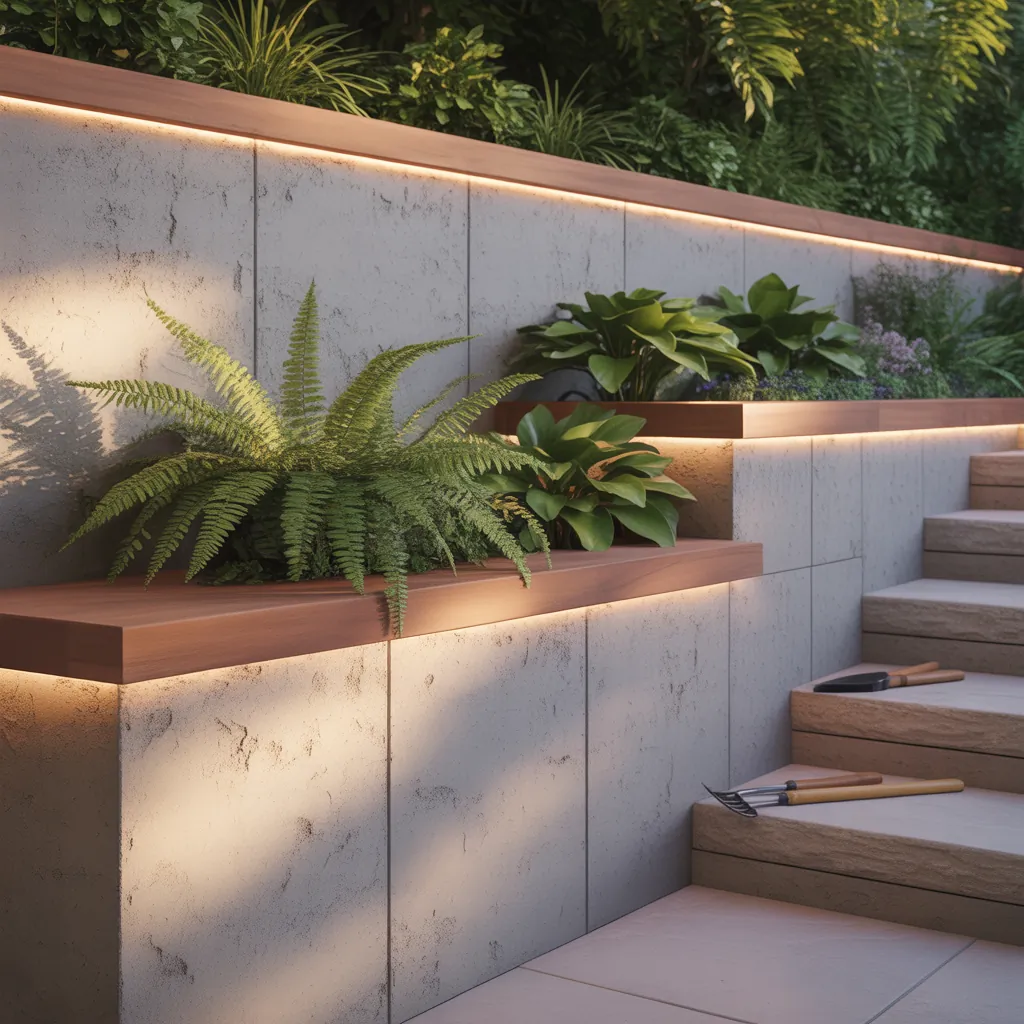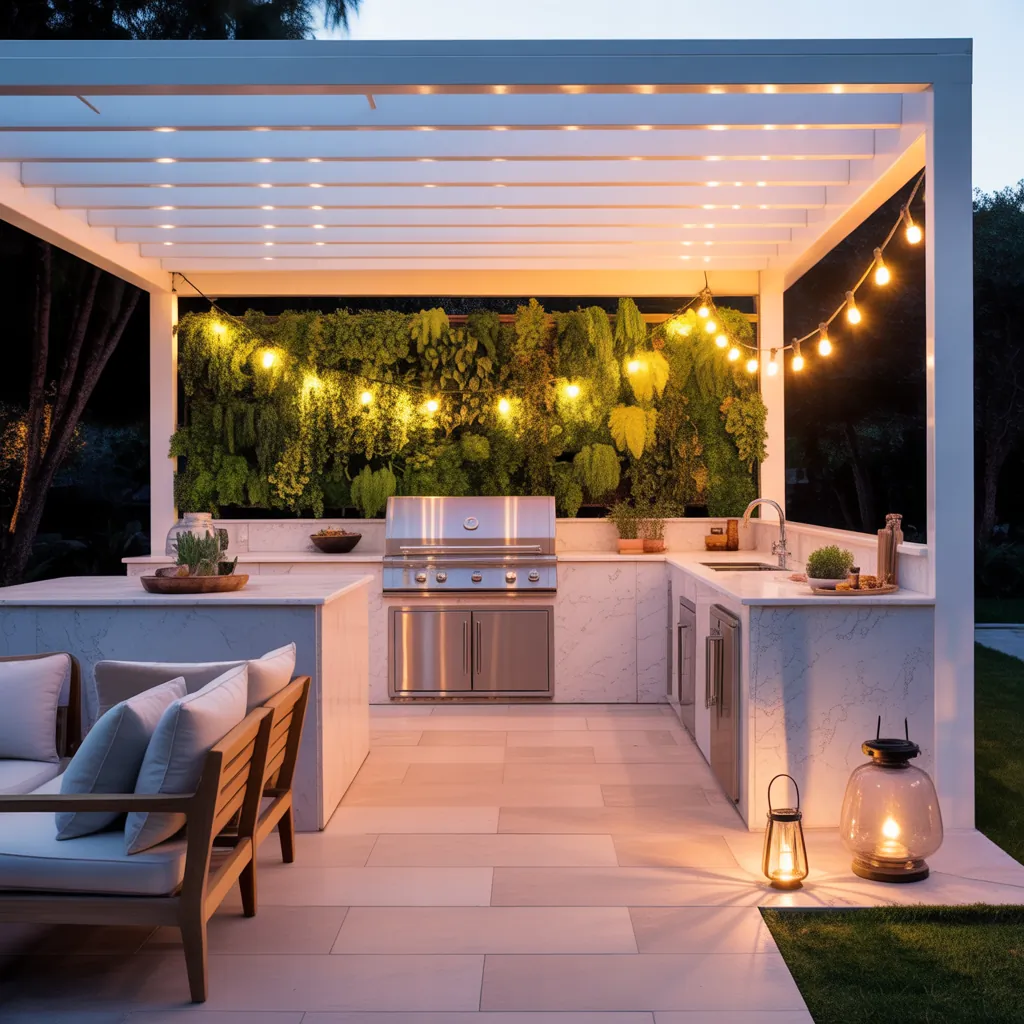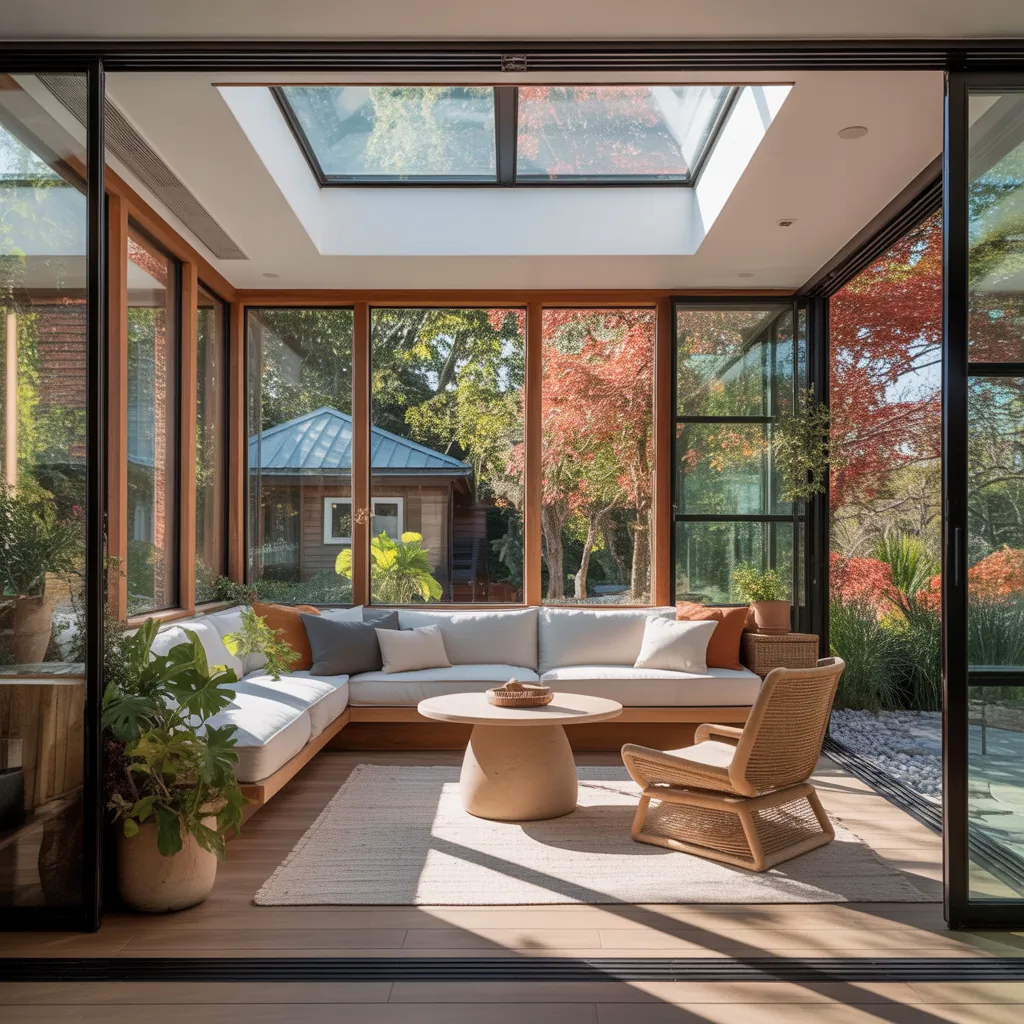Ever look at a sloped backyard and imagine a usable patio instead of a mudslide every spring? Or have a tired flowerbed that needs structure and style? If erosion, limited planting space, or an awkward grade is holding back your yard, smart retaining wall solutions can transform the space. In this guide you’ll discover practical, stylish, and achievable ideas for concrete retaining walls that suit DIYers and homeowners planning upgrades.
Why choose concrete for retaining walls?
Concrete is durable, versatile, and can be finished in many ways — from raw poured concrete to faux-stone finishes. It’s a top choice when you want a long-lasting landscape wall that can handle heavy loads and resist weathering. Whether you’re considering a poured concrete wall, concrete block (CMU) wall, or a decorative textured finish, concrete offers structural strength and design flexibility.
Quick planning checklist before you start
- Check local codes and permits — walls over a certain height may need engineering.
- Call utility locators to mark buried lines.
- Decide on wall height, length, and whether it’s structural or decorative.
- Plan drainage: a perforated drainpipe, gravel backfill, and weep holes are essential.
- Budget for materials, tools, and possible contractor help for taller walls.
Top design ideas for concrete retaining walls
1. Poured concrete with a smooth modern finish
Clean, monolithic walls suit contemporary landscapes. Use formwork to pour a smooth concrete wall and finish with a sealer. Add LED strip lighting near the top for evening ambiance.
2. Textured or board-formed concrete
Create a warm, rustic look by using wood planks as forms. The grain and pattern transfer into the concrete for a board-formed effect — ideal for modern farmhouse or minimalist gardens.
3. Concrete block (CMU) with stone or stucco veneer
Concrete block walls are modular and easier for DIYers. Finish with a faux-stone veneer, stucco, or paint to match your home’s exterior.
4. Tiered garden retaining walls
Break a steep slope into multiple short walls to create terraces. These are great for vegetable gardens, flower beds, and patio spaces. Each terrace reduces the pressure on the lower walls and increases usable yard space.
5. Concrete bench wall
Combine seating and structure. Build a low retaining wall with an extended cap to double as a bench for entertaining near patios or pool decks.
6. Curved or freeform retaining walls
Rounded walls soften hardscapes and guide the eye through the landscape. Curved formwork is more advanced but yields a high-end look.
7. Planter-integrated retaining walls
Top your retaining wall with planter boxes or set back the wall slightly to incorporate soil pockets for succulents, herbs, or cascading plants.
8. Stamped or colored concrete finishes
Imprint textures or add pigments to the surface for a customized look. Stamped patterns can mimic stone, brick, or tile while keeping the longevity and strength of concrete.
9. Exposed aggregate for traction and texture
Expose small stones in the concrete face for a tactile, long-lasting finish that’s slip-resistant — excellent for poolside retaining walls.
10. Hybrid walls: concrete plus natural stone or wood
Mix materials — a concrete core for strength with a stone veneer or wood cap for visual warmth — to create a balanced, upscale appearance.
DIY step-by-step: How to build a small poured concrete retaining wall (under 3 ft)
- Mark and excavate the wall trench to the depth of the footer (typically 8–12 inches, below frost line if applicable).
- Compact the subgrade and add a 4″ crushed stone base, compacted.
- Set forms and brace them securely; use level and string lines to keep alignment.
- Place reinforcement (rebar) if required for added strength.
- Pour concrete, vibrate to remove air pockets, and strike off flush with the tops of forms.
- Install a perforated drainpipe behind the wall at the base, wrap in landscape fabric, and backfill with gravel.
- Once cured, remove forms, install caps or coping, and finish with sealant or texture.
- Backfill the remaining space with compacted soil and reconnect landscaping.
Essential real-world tips and common mistakes to avoid
- Never skip drainage. Hydrostatic pressure is the main cause of wall failure.
- Use geogrid reinforcement for taller or heavily loaded walls.
- Choose frost-protected footings in cold climates to prevent heaving.
- Hire an engineer if the wall will retain more than 3–4 feet of soil or support structures.
- Consider expansion joints for long runs to prevent cracking.
Budgeting and materials: what to expect
Costs vary widely: DIY concrete block walls can be among the most affordable, while poured concrete with custom finishes is pricier. Factor in concrete, reinforcement, drainage materials, formwork, and labor (or rental equipment). Investing in proper drainage and reinforcement up front saves thousands in repairs later.
Ideas for concrete retaining walls — creative finishes and landscaping
Dress up a functional retaining wall with climbing vines, built-in planters, integrated lighting, or a wood or stone cap. Use planting pockets for succulents or trailing plants to soften the hard edge. For a modern aesthetic, try a smooth, stained finish with linear LED uplighting to highlight texture at night.
Frequently Asked Questions
1. How deep should a concrete retaining wall footing be?
For small walls under 3 feet, a footing 8–12 inches deep and 12–18 inches wide is common. Frost line and soil conditions may require deeper footings; consult local code or an engineer for exact requirements.
2. Can I build a retaining wall myself?
Yes, many homeowners can build small concrete block or low poured walls with proper planning and tools. However, walls over 3–4 feet or those supporting heavy loads should be designed by a professional engineer.
3. How do I prevent water from damaging my retaining wall?
Install a perforated drainpipe at the base, use gravel backfill, include weep holes if appropriate, and wrap drainage materials in landscape fabric. Proper grading and surface drainage away from the wall also help reduce pressure on the structure.
Conclusion — start transforming your yard today
Whether you pick modern poured concrete, a DIY concrete block wall, or a decorative stucco finish, these ideas for concrete retaining walls can turn a challenging slope into a beautiful, functional part of your landscape. Start with a solid plan, prioritize drainage, and choose a finish that fits your home’s style. Ready to take the next step? Browse our DIY projects for tool guides and how-tos, or get inspired by more home design ideas. If you’re focused on larger renovations, check related posts on kitchen upgrades for interior inspiration.
Call to action: Have a slope that needs taming? Share a photo or the wall dimensions in the comments to get targeted tips — or schedule a consultation with a local contractor if your wall will be structural. Let’s make your outdoor space usable and beautiful.



